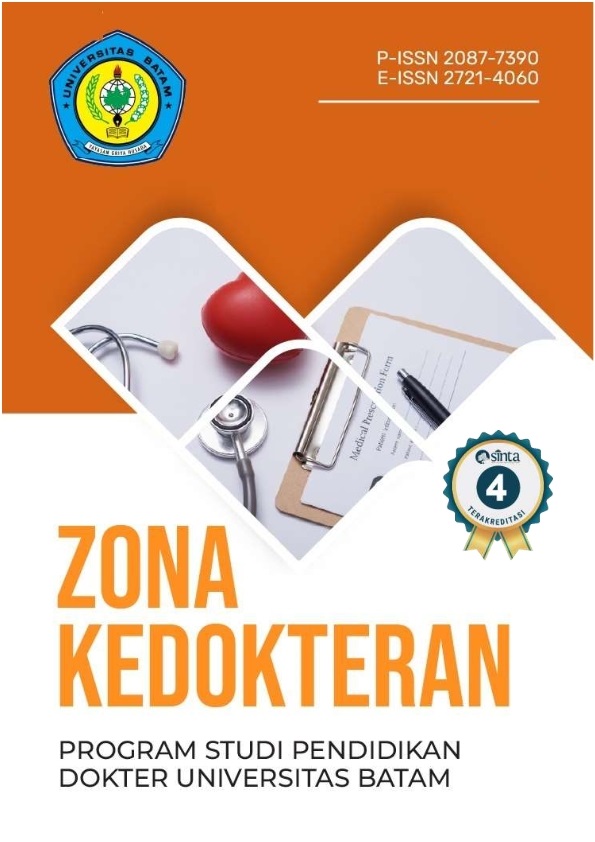HUBUNGAN POLA TIDUR DENGAN KEJADIAN AKNE VULGARIS DI PT X KABUPATEN TEBO PROVINSI JAMBI
DOI:
https://doi.org/10.37776/zked.v15i3.1956Abstract
ABSTRACT Background: Acne vulgaris is a common skin disorder involving the pilosebaceous unit, influenced by multiple factors including sleep patterns. Poor sleep quality reduces melatonin levels, increases androgen hormones, and stimulates excessive sebum production, contributing to acne development. Methods: This study used an analytical observational design with a cross-sectional approach. The sampling technique was purposive sampling. The study population was 235 PT X workers, with 100 respondents as the sample. Data analysis used the Chi-Square test.. Results: Most respondents had good sleep patterns (55%), while poor sleep patterns accounted for 45%. Acne vulgaris occurred in 47% of respondents. Respondents with poor sleep patterns who experienced acne vulgaris were 68.9%, compared to 29.1% among those with good sleep patterns. The Chi-Square test showed a p-value of 0.000 (p < 0.05). Conclusion: There is a significant relationship between sleep patterns and the incidence of acne vulgaris at PT X, Tebo Regency, Jambi Province. Keywords: Sleep Pattern, Acne Vulgaris, EmployeesDownloads
Published
Issue
Section
License
Copyright (c) 2025 Sudarsono, Sukma Sahreny, M. Salman Alfarisy

This work is licensed under a Creative Commons Attribution-NonCommercial-ShareAlike 4.0 International License.






